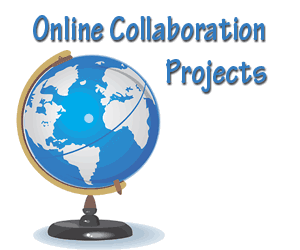 The Teacher's Corner
The Teacher's Corner
Poetry Power
Poetry Power - STANDARDS

| Project Home |
| Activity |
| Registration |
| Extension Activities |
| Printables |
| Standards |
| Showcase |
NETS for Students
ISTE's Educational Technology Standards for Students
| 1. | Creativity and Innovation | ||||||
Students demonstrate creative thinking, construct knowledge, and develop innovative products and processes using technology. Students: |
|||||||
|
|||||||
| 2. | Communication and Collaboration | ||||||
Students use digital media and environments to communicate and work collaboratively, including at a distance, to support individual learning and contribute to the learning of others. Students: |
|||||||
|
|||||||
| 4. | Critical Thinking, Problem Solving, and Decision Making | ||||||
Students use critical thinking skills to plan and conduct research, manage projects, solve problems, and make informed decisions using appropriate digital tools and resources. Students: |
|||||||
|
|||||||
| 5. | Digital Citizenship | ||||||
| Students understand human, cultural, and societal issues related to technology and practice legal and ethical behavior. Students: | |||||||
|
|||||||
| 6. | Technology Operations and Concepts | ||||||
| Students demonstrate a sound understanding of technology concepts, systems, and operations. Students: | |||||||
|
NETS for Teachers
ISTE's National Educational Technology Standards and Performance Indicators for Teachers
| 1. | Facilitate and Inspire Student Learning and Creativity | ||||||||
Teachers use their knowledge of subject matter, teaching and learning, and technology to facilitate experiences that advance student |
|||||||||
|
|||||||||
| 2. | Design and Develop Digital-Age Learning Experiences and Assessments | ||||||||
Teachers design, develop, and evaluate authentic learning experiences and assessments incorporating contemporary tools and resources to maximize content learning in context and to develop the knowledge, skills, and attitudes identified in the NETS•S. Teachers: |
|||||||||
|
|||||||||
| 3. | Model Digital-Age Work and Learning | ||||||||
Teachers exhibit knowledge, skills, and work processes representative of an innovative professional in a global and digital society. Teachers: |
|||||||||
|
|||||||||
| 4. | Promote and Model Digital Citizenship and Responsibility | ||||||||
| Teachers understand local and global societal issues and responsibilities in an evolving digital culture and exhibit legal and ethical behavior in their professional practices. Teachers: |
|||||||||
|
Contact us: